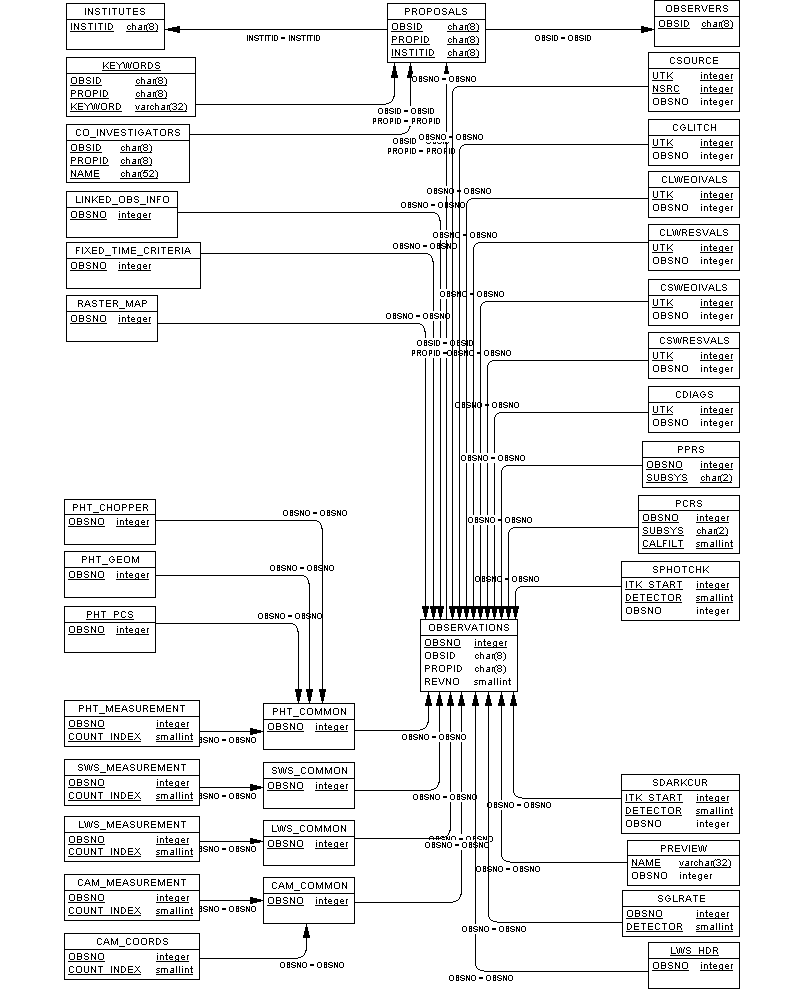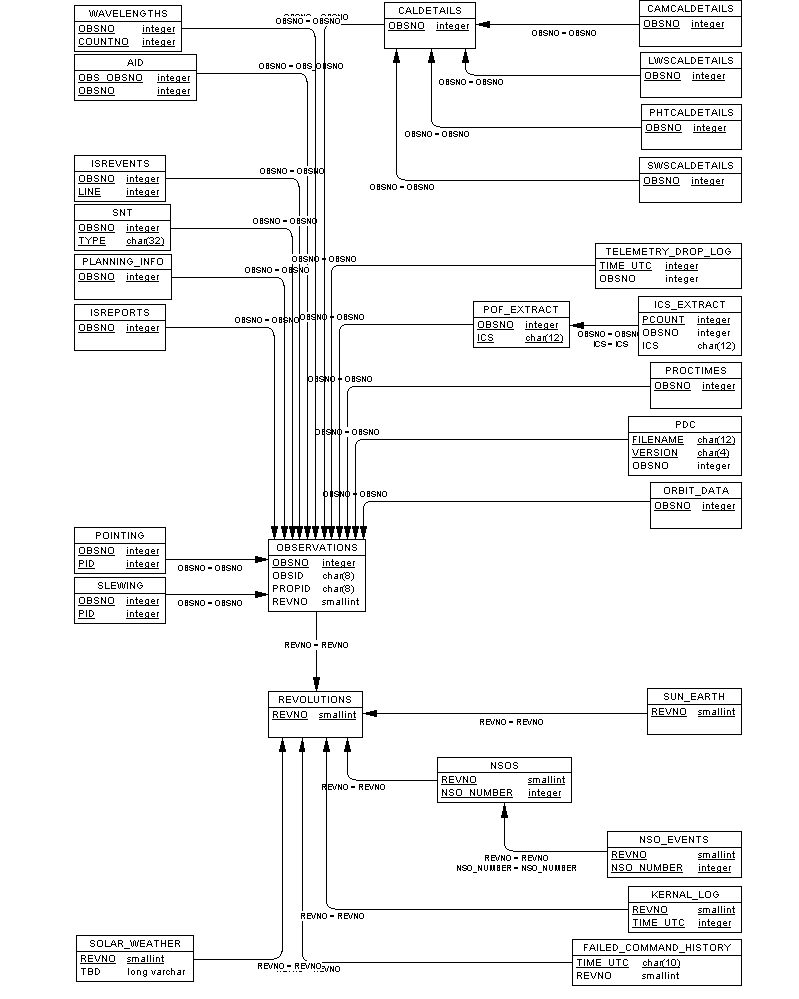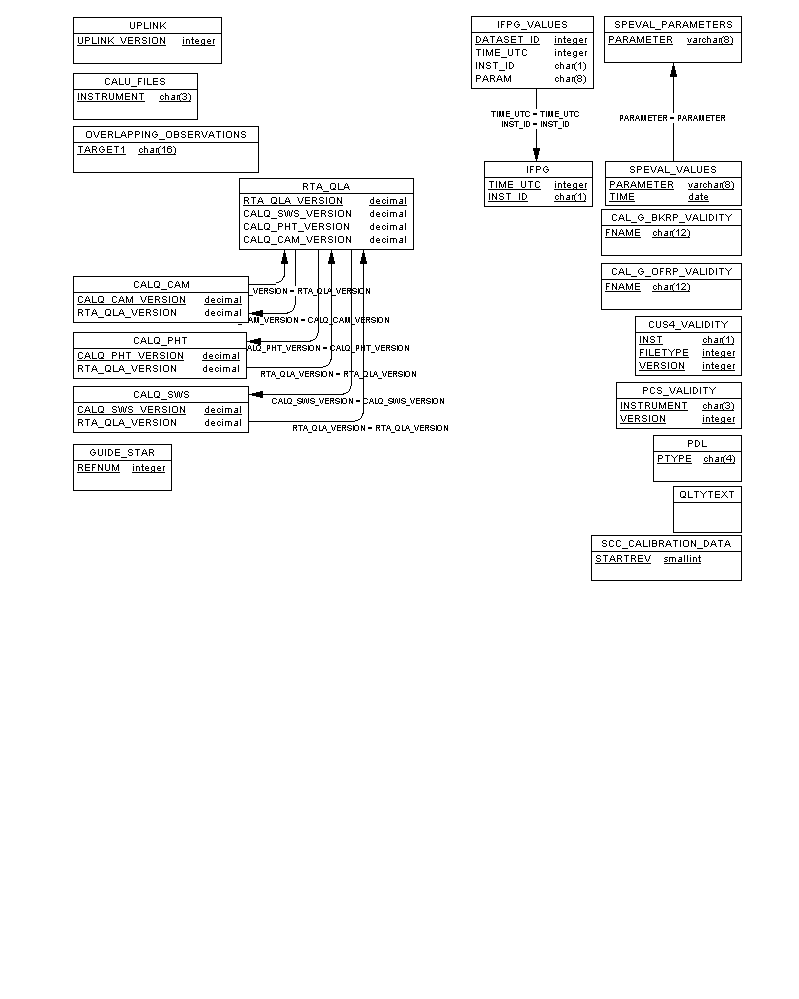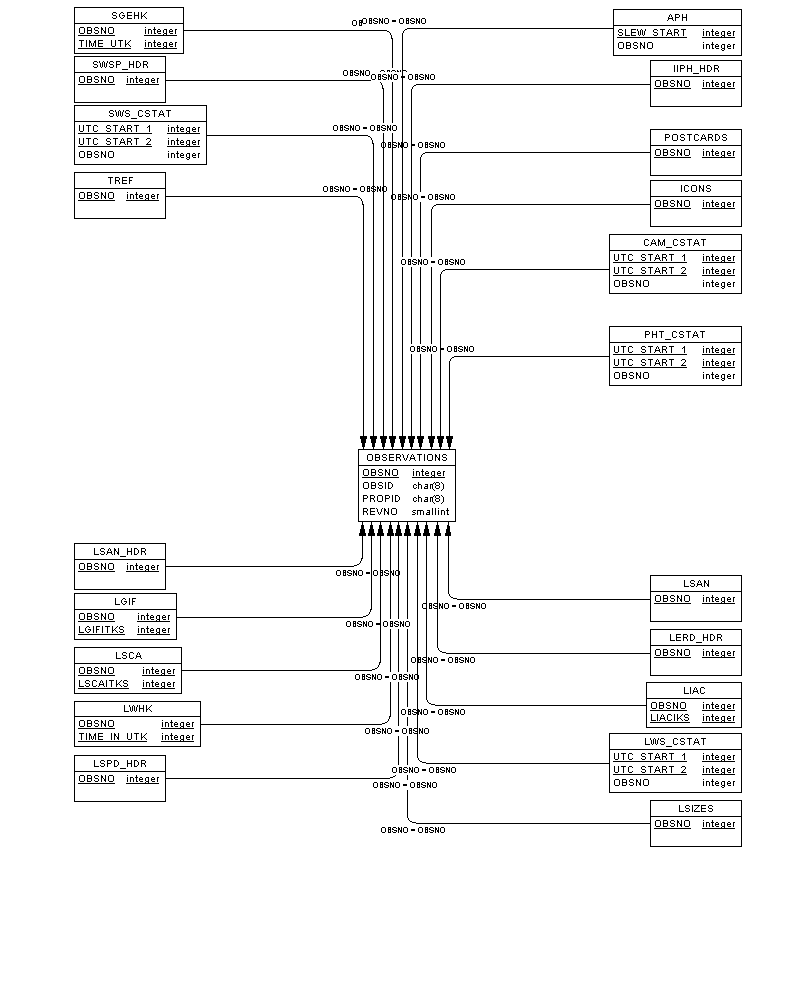

A PDM represents the structure of the data as it will be implemented in the database. The ISO Data Archive PDM was originally generated from the ISO Data Archive CDM taken into account the features and physical restrictions of the SYBASE System 11 DataBase Management System (DBMS) which is used to implement the ISO Data Archive PDM.
Over time, the PDM has been modified directly due to various reasons, such as addition of new data, change in requirements, etc. To keep this document up-to-date so that it can be a useful guide to users of the IDA, the physical data model detailed description (the remaining section of this chapter) has been generated automatically using Embacadero's DbArtisan DBMS. This enables the detailed table descriptions to be as up-to-the-minute and as accurate as possible.
To enhance the automatically generated reports, table and column descriptions have also been added where useful/necessary.
| Object in a CDM | Generated object in a PDM |
| Attribute | Column |
| Entity | Table |
| Identifier | Primary or foreign key depending on independent or dependent relationship |
| Relationship | Reference |
Furthermore, the data types of the attributes specified in the ISO Data Archive CDM are translated into the physical data types which the target database, SYBASE System 11, supports.
Generating primary and foreign keys
Primary and foreign keys in the ISO Data Archive PDM are generated from the identifiers in the ISO Data Archive CDM. The type of key depends on the relationships between the entities in the CDM.
Independent one-to-many relationships
In independent one-to-many relationships, the identifier of the entity on the one side of the relationship becomes a:
primary key in the table generated by the entity on the one
side of the relationship
foreign key in the table generated by the entity on the
many side of the relationship.
Dependent one-to-many relationships
In dependent relationships, the identifier of the non-dependent entity becomes a primary/foreign key in the table generated by the dependent entity.
Independent one-to-one relationships
In independent one-to-one relationships, the identifier of one entity migrates as a foreign key to the table generated by the other.
Independent many-to-many relationships
In independent many-to-many relationships, the identifiers of both entities migrate to a join table as primary/foreign keys.
The model had to be split into five models due to the number of tables.

PDM Figure 1.

PDM Figure 2.

PDM Figure 3.

PDM Figure 4.